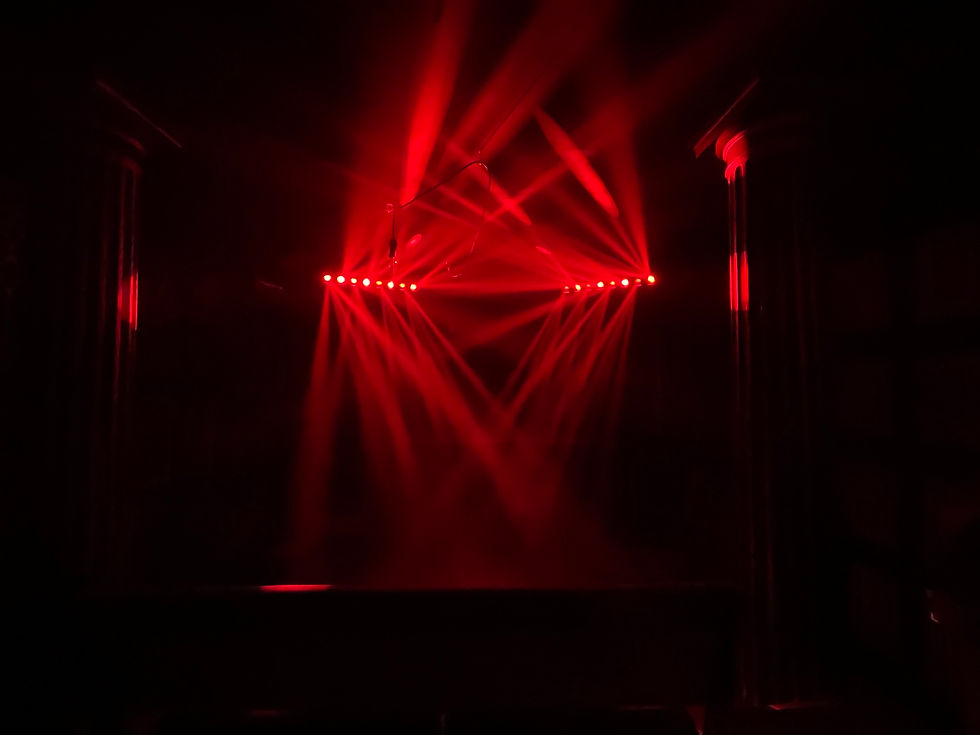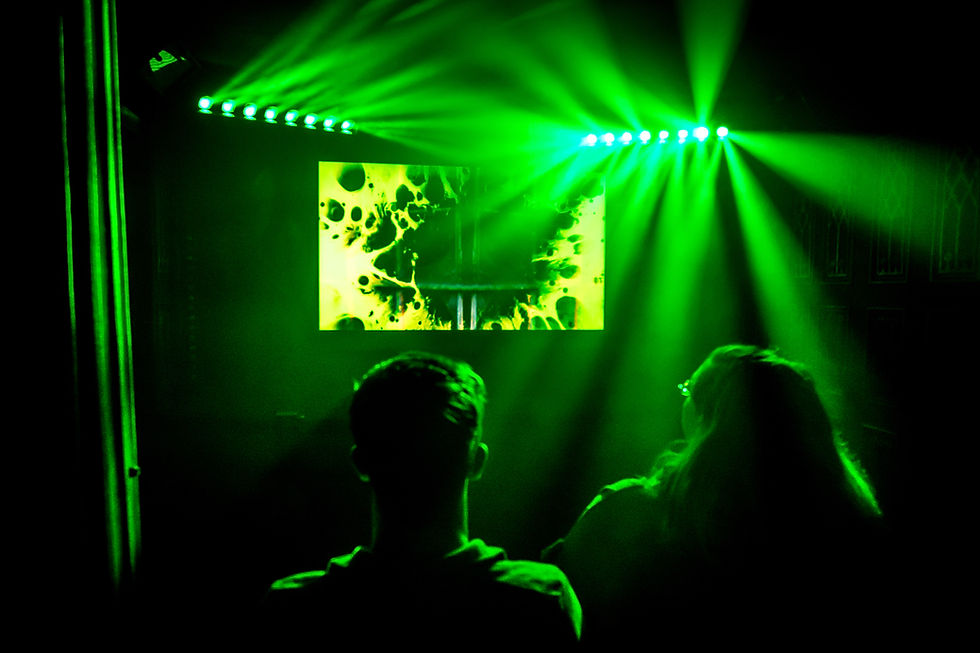IMMERSIVE DESIGN THEORY - "EFFECT TO AFFECT".
- dgoodman5
- Jun 12
- 4 min read
Updated: Jun 25
Using Special Effects to Move Emotions, Not Just Air
In immersive entertainment, special effects are often the showstoppers.They’re the flashes, bangs, blasts, and illusions that make jaws drop and phones fly up for a photo. But amid all the technical wizardry, it’s easy to lose sight of a critical design principle:
Special effects should exist to affect, not just to impress.
Yes, effects are cool. But unless they’re making your audience feel something, you’re not using them to their full potential.
Let’s dive into the why, when, and how of deploying effects that go beyond spectacle and stir something deeper.

What Is a Special Effect?
Before we go further, let’s clarify our terms.
In immersive experiences, “special effects” generally refer to sensory tools that go beyond standard lighting and sound design. They are out-of-the-ordinary, often tied to a specific narrative moment or shift in scene. Some of the most commonly used effects include:
Lights (moving heads, UV, strobes, lasers)
Sounds (sound cues, spatial audio, subwoofer hits)
Compressed Air (air blasts, cannons)
Smoke (haze, fog, vapour effects)
Mechanical Rigs (moving elements, animatronics)
Water (rain, mist, fountains)
Pyrotechnics (sparks, flame, fireworks)
Wind (fans, gust tunnels)
These are your toolkit. But the tools are only as powerful as the intent behind them.
Step One: Design to Affect Emotion
The golden rule: Every effect must have an emotional goal.
Don’t ask: Where can we put a fog machine? Ask: Where do we want the audience to feel dread, suspense, or revelation?
Here are just a few pairings of effects and their emotional weight:
Compressed air → Shock, surprise, tension break
Red lighting → Threat, dread, tension
Blue lighting → Calm, mystery, serenity
Strobe + lightning SFX → Heightened panic, divine presence
Smoke / haze → Anticipation, distortion, memory
Pyrotechnics → Awe, power, spectacle
Water → Cleansing, danger, naturalism
Wind → Movement, scale, disorientation
Used well, effects are punctuation in your storytelling. They highlight key moments, emotional beats, or turning points. They are not wallpaper. They are exclamation marks.
Step Two: Let It Breathe
Special effects only feel special if they’re not constant.
Overuse is one of the fastest ways to desensitise your audience. When everything is loud and explosive, nothing has weight. Think of a rock concert: The pyrotechnics don’t go off every 10 seconds. They hit at the chorus drop. The finale. The moment the crowd has been waiting for.
Same goes for your immersive experience. Let effects breathe. Give them space to shine, and more importantly, give your audience time to feel them.
Use quiet moments, stillness, or simplicity before an effect to create contrast. Tension before release. Softness before shock.
Step Three: Maximise the Value
Special effects often take up a sizable chunk of your production budget. So how do you ensure they generate maximum return?
1. Build the Story Around Them
If you’re spending money on a mechanical rig, flame effect, or water sequence—build narrative weight into it. Let it carry emotional consequence. Don’t just drop it in because it looks cool.
Make it part of the lore. Give it foreshadowing. Let the characters refer to it, fear it, or strive toward it. Your audience will feel more payoff when the effect finally hits.
2. Use It in Your Marketing
There’s a pervasive myth in immersive circles that your best moments should be hidden to preserve mystery. But here’s the thing: No concert or blockbuster movie hides their biggest spectacle. They sell it.
Show it in your trailers. Tease it in your ads. These are the emotional high points that make people buy tickets. Because seeing the effect is only half the draw. Audiences want to feel why it happens. They want to see how it builds.
3. Encourage Capture
Effects are camera moments. If your audience pulls out a phone during your lightning strike, your fire burst, your water wall—that’s free advertising.
Design with these “capture beats” in mind. Embrace them. And remember: if the moment is emotionally resonant and visually arresting, guests will want to share it.
Final Thought: Design for the Story, Not the Switchboard
Special effects are not bonus features. They are emotional drivers.
A strobe isn’t just a flicker of light—it’s a heartbeat. A burst of air isn’t just pressure—it’s a gasp. A fog bank isn’t just atmosphere—it’s uncertainty incarnate.
If you remember one thing, be it “Effect to Affect.”
Design effects not just to be seen, but to be felt. Because when your audience walks away, they won’t just remember the flames. They’ll remember the feeling right before the flames—and what it meant when they roared to life.
DESIGNING IMMERSIVE.
It's complicated, intricate and specialist. Koncept has it mastered.
Koncept are specialists in writing and designing immersive attractions that stand out. With a portfolio of award-winning productions, Koncept has a proven track record of transforming ideas into fully realized, expertly written experiences that customers will pay to be immersed in.
_edited_p.png)




Comments